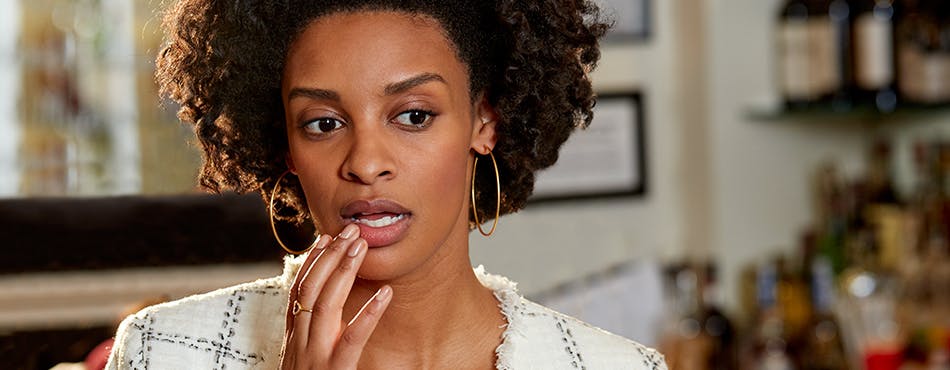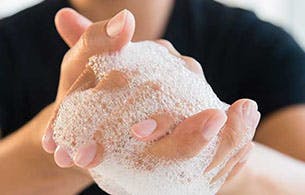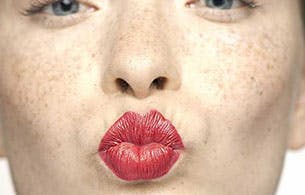Back to Dealing with Cold Sores articles


What’s the Difference Between a Cold Sore and a Fever Blister?
What is a fever blister? The answer might surprise you –fever blister and a cold sore are one and the same. They are both common viral infections that are caused by the herpes simplex virus.1
Discover how to treat and prevent fever blisters with our top lip care tips.

What Is a Fever Blister?
Cold sores have been called fever blisters in the past because they often appeared when someone had a fever. But fever blisters are caused by the exact same virus as cold sores that infects the mouth area. This virus attacks cells and causes symptoms such as blisters, tingling and itching, and oozing when these blisters burst.1

What Causes a Fever Blister on Your Lip?
In addition to being called fever blisters or cold sores, these blisters are often called oral herpes because they are caused by the herpes simplex virus type 1 (HSV-1).2 This common viral infection affects around two thirds of adults aged 50 and over,2 but not everyone will show the telltale symptom of blisters on their lips.2

Where Do You Get Fever Blisters?
The blisters associated with cold sores appear on the lips or the edges of the lips. If the herpes simplex virus is passed to other parts of the body, you may experience fever blisters in the nose, cheeks, fingers, or genitals.1

What Does a Fever Blister on Your Lip Look Like?
A fever blister on your lip will appear as a small area of red, inflamed skin that may feel sore. After a few days, blisters may break open, ooze and then crust over.2 More than one blister is likely, with fever blisters often grouped together in patches.1 Fever blisters may heal without leaving a scar.1

Are Fever Blisters Contagious?
Fever blisters are highly contagious and can be spread easily.3 The HSV-1 virus is most contagious when you are showing symptoms of a cold sore – from first experiencing the tingling, itching or burning sensation that suggests a fever blister is coming right through the period when the blister is visible and hasn’t completely healed. 3
To avoid passing the virus to others, you should stick to a strict hygiene regime, avoid close physical contact such as kissing, or sharing objects such as eating utensils and lipstick3. And, if you do feel the tingle, make sure you have a tube of Abreva® Cream with you, so you can slow the virus and possibly prevent a full fever blister or cold sore from developing.

How Long Will a Fever Blister on My Lip Last?
A blister or cold sore on your lip may take 2-3 weeks to fully heal.1 . The first time you have a cold sore, symptoms may not start for up to 20 days after you were first exposed to the virus, and sores can last several days.1 At the first sign of an outbreak, you can use Abreva® Cream to heal your cold sore in just 2½ days.*

Are Fever Blisters Serious?
For most people, complications with fever blistersare uncommon. As a blister can break open, you are at risk of viral infection if you keep touching the area and don't keep your hands and face clean.1 If the virus spreads to the eye, medical help should be sought as repeated infection can cause scarring and injury, which may result in vision problems or blindness.1 Babies and those with weakened immune systems may catch a widespread herpes infection if exposed to a cold sore, which can affect vital organs including the eyes, lungs, liver, brain, and skin.5 Those with eczema (also known as: atopic dermatitis) are at risk of developing a dangerous condition called eczema herpeticum if they come into contact with cold sores.4 This means the infection spreads throughout their body, leading to long-term scarring, blindness and sometimes organ failure or death.4

Can I Prevent a Fever Blister?
Once you are infected, the HSV-1 virus never leaves your body. It lies dormant in the nerve cells in your skin until a trigger – such as a cold or flu, excessive sunshine, cold weather or stress – activates the virus.3
You can try to protect yourself against outbreaks by always drinking lots of water, getting plenty of rest, having your annual flu vaccination and managing cold sore triggers such as stress, fatigue, cold or excessive sunlight.1

Fever Blister Treatment
There is no cure for the herpes simplex virus nor is there a vaccine, but there is effective fever blister treatment. You can treat the blister or the area where you feel the pre-blister tingling with Abreva Rapid Pain Relief Gel , a powerful cold sore pain relief treatment that starts to work immediately to alleviate the burning pain and throbbing sensations that accompany cold sores.
*Median healing time 4.1 days. 25% of users healed within 2½ days.






